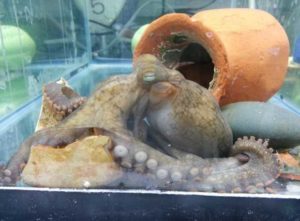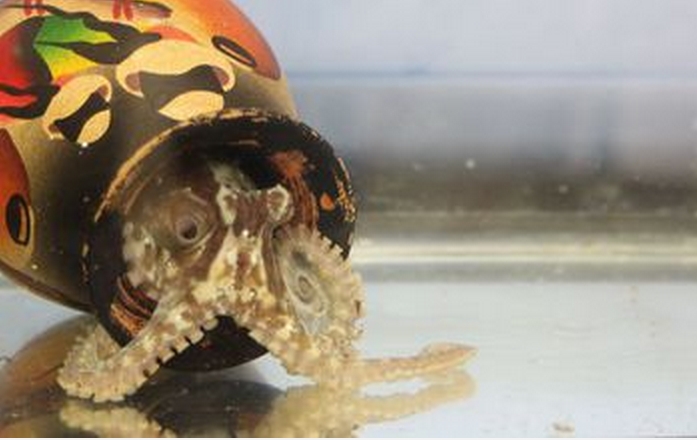
For all their uncanny intelligence and seemingly supernatural abilities to change color and regenerate limbs, octopuses often suffer a tragic death. After a mother octopus lays a clutch of eggs, she quits eating and wastes away; by the time the eggs hatch, she is dead. Some females in captivity even seem to speed up this process intentionally, mutilating themselves and twisting their arms into a tangled mess.
The source of this bizarre maternal behavior seems to be the optic gland, an organ similar to the pituitary gland in mammals. For years, just how this gland triggered the gruesome death spiral was unclear. But in a new study published May 12 in Current Biology, researchers from the University of Washington, the University of Chicago and the University of Illinois Chicago show that the optic gland in maternal octopuses undergoes a massive shift in cholesterol metabolism, resulting in dramatic changes in the steroid hormones produced. Alterations in cholesterol metabolism in other animals, including humans, can have serious consequences on longevity and behavior, and the team believes this reveals important similarities in the functions of these steroids across the animal kingdom — in soft-bodied cephalopods and vertebrates alike.
“We know cholesterol is important from a dietary perspective, and within different signaling systems in the body, too,” said lead author Z Yan Wang, an incoming assistant professor of psychology and of biology at the University of Washington, who initiated this study as a doctoral student at the University of Chicago. “It’s involved in everything from the flexibility of cell membranes to production of stress hormones, but it was a big surprise to see it play a part in this life cycle process as well.”
In 1977, Brandeis University psychologist Jerome Wodinsky showed that if he removed the optic gland from Caribbean two-spot octopus mothers, they abandoned their eggs, resumed feeding, and lived for months longer. At the time, cephalopod biologists concluded that the optic gland must secrete some kind of “self-destruct” hormone, but just what it was and how it worked was unclear.
Read the full article at University of Washington
[content id=”79272″]





